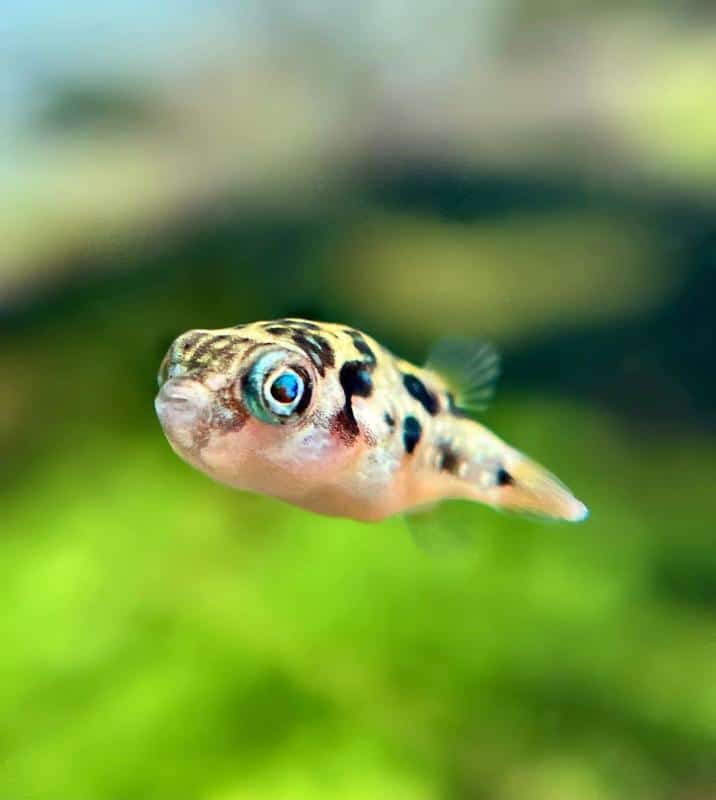Effective Ways to Optimize Your 10 Gallon Saltwater Tank in 2025

Effective Ways to Optimize Your 10 Gallon Saltwater Tank in 2025
Setting up and maintaining a 10 gallon saltwater tank can be a daunting endeavor, especially for beginners. However, with the right knowledge and tools, you can create a thriving marine ecosystem that brings beauty and joy into your home. This article will delve into comprehensive methods to optimize your 10 gallon saltwater tank setup, focusing on essential equipment, maintenance techniques, and best practices. Whether you're starting your journey into saltwater aquariums or looking to enhance your current setup, our guide offers valuable insights and tips to help you succeed.
From proper filtration and lighting to coral options and fish compatibility, we will cover various aspects of setting up your tank effectively. Expect to learn about the challenges of a smaller tank, and how to tackle them without compromising the well-being of your aquatic inhabitants. By the end of this article, you will gain a better understanding of how to maintain the ideal environment for your saltwater aquarium, ensuring it remains vibrant and healthy.
Let’s explore the effective ways to optimize your 10 gallon saltwater tank!
Essential Equipment for Your 10 Gallon Saltwater Tank
When it comes to establishing a successful 10 gallon saltwater tank, selecting the right equipment is paramount. The equipment not only contributes to the aesthetic appeal of your aquarium but also plays a critical role in maintaining the health of your marine life.
10 Gallon Saltwater Tank Equipment Checklist
Embarking on your saltwater aquarium journey starts with a comprehensive equipment checklist. The essentials include:
- Filter: A reliable filtration system is crucial for maintaining water clarity and quality. Consider options such as hang-on-back or canister filters suited for smaller tanks.
- Heater: Keeping the right temperature is vital for your marine life. The best heater for 10 gallon tanks should have adjustable settings to maintain temperatures between 75°F and 80°F.
- Lighting: The ideal lighting for a 10 gallon saltwater tank will depend on whether you choose to include corals or fish. LED lights provide energy efficiency and adjustable spectrum for coral growth.
- Substrate: Choose substrate types that provide a solid base for live rock and help with biological filtration.
- Test Kit: Maintaining proper water parameters is essential for your aquarium's success. A 10 gallon aquarium test kit will help you monitor pH levels, ammonia, nitrate, and nitrite.
Best Practices for Filtration in 10 Gallon Saltwater Tanks
Adequate filtration is crucial to keep your tank environment healthy. With limited water volume in a 10 gallon tank, biological filtration becomes even more important. Look for filtration options like:
- Live Rock: Weighing down your tank's biological load, live rock acts as a natural filter, promoting beneficial bacteria growth.
- Protein Skimmers: Although initially considered too large for small setups, new compact models exist that can efficiently remove organic waste.
- Periodic Maintenance: Regular cleaning of filter media and replacement of filter cartridges will help maintain optimal performance.
Maintaining Water Quality: Testing Factors
Regular water tests ensure your parameters remain stable. Here are the indicators to monitor:
- pH Levels: Maintaining a pH between 7.8 and 8.4 is optimal for marine life.
- Nitrate and Nitrite Levels: Aim for undetectable nitrite levels and low nitrate levels (preferably below 20 ppm).
- Salinity: Keeping salinity stable around 1.020 to 1.025 will help your aquatic ecosystem thrive.
Choosing Lighting for Optimal Growth in a Saltwater Tank
The right lighting plays a significant role in the health of your corals and overall environment. Understanding the types of lighting and their benefits is crucial for a successful 10 gallon saltwater tank.
Types of Lighting for a 10 Gallon Saltwater Tank
In a small aquatic ecosystem, light installation requires careful consideration. Two popular options include:
- LED Fixtures: LED lights are energy-efficient and customizable, providing various spectrums that can promote coral growth and health.
- Metal Halide Lights: Though more power-hungry, they create intense light ideal for coral-heavy tanks but can elevate tank temperatures.
Understanding Lighting Schedule for Coral Growth
A lighting schedule promotes coral adaptation and health. Typically, aim for:
- 8-10 Hours of Light: This duration is generally sufficient for corals to photosynthesize effectively.
- Light Cycles: Replicating a natural day/night cycle helps maintain a stable environment for your aquarium inhabitants.
Common Mistakes in Aquarium Lighting
Improper lighting can lead to problems such as algae blooms or coral bleaching. Common pitfalls include:
- Inconsistent Light Change: Failing to introduce lighting gradually can shock corals and stress fish.
- Overexposure: Too much lighting can promote unwanted algae growth, what can severely affect tank parameters.
10 Gallon Saltwater Tank Cycling: Getting Started
Understanding how to cycle your tank is fundamental in establishing a healthy marine ecosystem. Cycling involves establishing beneficial bacteria that break down waste products, making it crucial for water quality.
Basic Steps for Tank Cycling
The cycling process typically follows these steps:
- Initial Setup: Add your substrate, decorations, and any live rock to begin the foundation.
- Introduce Ammonia: Adding a small amount of ammonia initiates the nitrogen cycle, helping beneficial bacteria develop.
- Monitoring Parameters: Test for ammonia, nitrite, and nitrate levels as these will indicate progression through the cycling phases.
Common Cycling Challenges and Solutions
New aquarists may face challenges when cycling, such as:
- Cycle Failures: Fluctuations in temperature or inadequate ammonia levels can hinder successful cycling.
- Prolonged Duration: Cycling a 10 gallon tank usually takes 4-6 weeks, and any interruptions can delay this process.
Daily Observations During Cycling
Regular observations help you to react appropriately to changes in your tank conditions. Key actions include:
- Daily Tests: Set a schedule for daily tests to see how water parameters change throughout the cycling phase.
- Watch for Algae: The appearance of algae can be an indicator of nutrient imbalance, requiring adjustments.
Establishing a Suitable Environment for Your Fish
Stocking choices are vital to ensuring a harmonious community in your 10 gallon saltwater tank. The right species will create an engaging aspect of this marine ecosystem while promoting health and balance.
Best Fish for a 10 Gallon Saltwater Tank
When selecting fish, consider compatibility and needs:
- Clownfish: Hardy and visually striking, they thrive in smaller groups and adapt well to nano tanks.
- Gobies: These bottom-dwellers add diversity and are generally small enough for your space.
- Coral Beauty Angelfish: While captivating, ensure to research compatibility before introducing them.
10 Gallon Saltwater Tank Fish Compatibility
It’s crucial to understand the compatibility of your chosen species. Some tips include:
- Same Water Requirements: All species should thrive in similar water parameters.
- Space and Behavior: Avoid aggressive species that may stress your community.
Adding Inhabitants to Your 10 Gallon Tank
Integrating new fish requires consideration:
- Quarantine New Additions: Prevent introducing diseases by quarantining newcomers for two weeks.
- Introduce Slowly: Introduce one fish at a time to ensure your tank’s balance is maintained.
Challenges of a 10 Gallon Saltwater Tank
While small tanks can be charming, they also present unique challenges that require careful management. Understanding these challenges will equip you for success.
Common Issues Encountered in Small Tanks
Common challenges include:
- Water Parameter Fluctuations: Smaller tanks are more susceptible to rapid changes, necessitating more frequent testing and monitoring.
- Overstocking Risks: It may be tempting to add multiple fish; however, this can easily overwhelm the small tank’s ecosystem.
10 Gallon Saltwater Tank Maintenance Frequency
Frequent maintenance checks will ensure a balanced environment. Recommended practices include:
- Weekly Testing: Test your water parameters at least once a week.
- Bi-weekly Water Changes: Perform regular water changes to replenish essential elements and remove pollutants.

Emergency Measures for Saltwater Tanks
Develop a plan for emergencies that may arise. This could include:
- Power Outages: Having backup battery-operated pumps can help maintain water movement.
- Temperature Control: Introducing ice packs during summer can stabilize temperatures if necessary.
Conclusion: Mastering Your 10 Gallon Saltwater Tank
Transforming your 10 gallon saltwater tank into a thriving environment involves deliberate planning and consistent effort. By applying the effective methods outlined in this article, you can optimize your setup for aesthetic appeal and environmental stability. Remember to choose the right equipment, maintain a conducive environment, and monitor aquatic health closely. Utilize community resources, such as forums for advice, and remain open to learning and adjusting your practices as needed.
